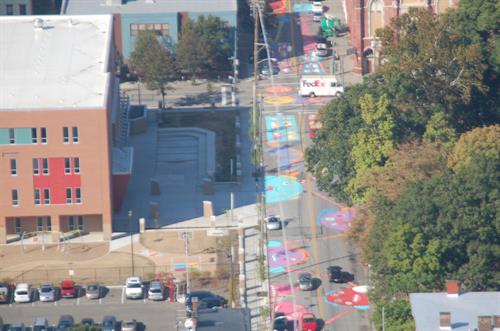posted by Alecia Kintner ON
Feb 15, 2019

Whatever you might think about Amazon's strategy for choosing its second headquarters, there’s something in common among the top-ranked cities that you probably haven’t noticed: their intentional, increasing investments in the arts.
A majority of the 20 shortlisted cities all invest more, on a per capita basis, than the national average for public funding of arts and culture ($7.11, according to the Urban Arts Federation of Americans for the Arts). Public funding typically comes from taxes or local or county budgets.
Some of the places that made the HQ2 list spend a lot more on their arts than the national average.
Take metro Denver, for example. A region of 2.8 million people, it's safe to assume that many have been attracted to its well-known natural beauty and recreation options. But Denver has had a parallel growth strategy for arts and culture. They've established a sales tax within a seven-county footprint that funds a "Scientific and Cultural Facilities District." In 2017, this regional asset district resulted in $57 million to nearly 300 organizations. That’s about $48 per capita invested in arts and culture annually — nearly seven times the national average. And of course, private philanthropy is on top of that. Denver now ranks 6th in the U.S. for the number of arts-related businesses, all of which support a thriving creative economy.
Toronto, another region on the short list, has also intentionally worked to increase public investment in the arts. Almost 20 years ago, its city council approved a "Culture Plan for a Creative City," with the goal of growing per capita investment by the municipal government from $14 to $25. Over the years, they've developed a revenue model derived from billboard taxes and presently budget more than $18 million annually for the arts, or about $19 per capita — with clear sights still set on that $25 target. Toronto is enjoying explosive population growth.
We've done some informal mapping of how metro Cincinnati, which also submitted an Amazon HQ2 bid, stacks up against competitive regions for talent and new business, like Denver and Toronto, in terms of arts investments. It's not apples to apples, since the arts in the Greater Cincinnati/Northern Kentucky region do not receive local tax dollars or operating support from local/county governments. But, if you use ArtsWave's Community Campaign as the proxy for consistent, annual arts investment, it's fair to say that we are not keeping pace with other regions that we aspire to compete with. In fact, with about $12 million raised in each of the last five years from individuals, businesses and foundations, ArtsWave's roughly $5.55 per capita for regional arts support is slightly under the national average.
We've set a goal to grow the ArtsWave Campaign in 2019, and it will take everyone's support and generosity to do that. Our region's future economic prosperity, as well as the present-day impacts of arts and culture, depends on it.